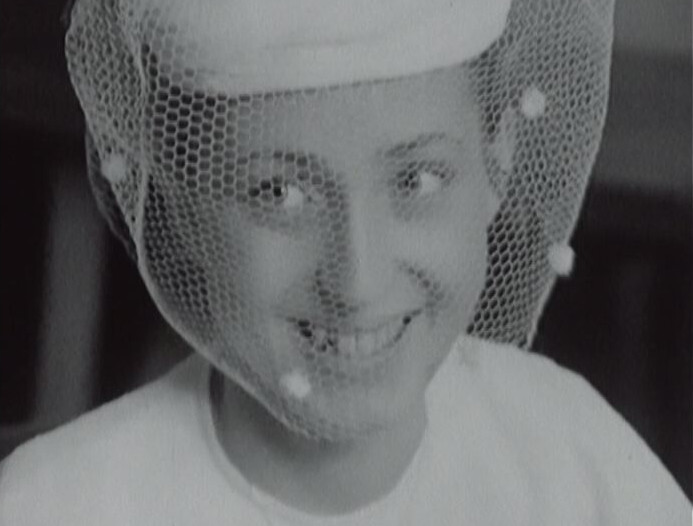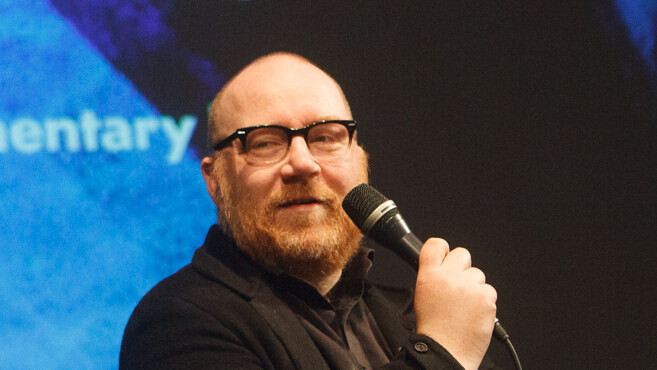Longitudinal Films and Helena Třeštíková’s Marriage Stories
When it comes to film, the concept of collecting information over time is directly associated with the nature of the medium itself and may be separated into two diametrically different types. One makes it possible to speed up things that otherwise take much longer when taken in relation to how life passes; conversely, the second slows down that which is too fast for the human eye to register. Both approaches correspond to two basic categories of films that collect information: the first may be termed sociological, the second falls within the realm of the natural sciences. In Czech, the same term is used for both – “časosběr”, meaning “time-lapse”. Other languages, such as English, have different terms for each, where “time-lapse” is used for subjects from the natural sciences, and works with sociological themes are called “longitudinal documentaries”, “long-term observations”, or, in some cases, even “period dramas”.
Probably the oldest longitudinal documentary project is Winfried Junge’s series Die Kinder von Golzow, which started tracking several children (all aged seven at the time) from a small town on the German-Polish border. The filmmakers finished shooting in 2006, stating that “everything essential has already been said”. A total of twenty films originated over the course of forty-six years, and there is even a museum in Golzow dedicated to the entire project.
The most popular sociological longitudinal format may be found in the 7 UP series, created by the well-known British director Michael Apted. His films are based on the finding that the human body replaces itself, at the cellular level, every seven years. For this reason, since 1964 he has been filming a group of fourteen children at seven-year intervals. The director is exploring how belonging to a certain social group influences a child’s future life. The British commercial ITV station broadcast the most recent continuation of the series – 56 UP – in 2012.
It is also worth mentioning what is the world’s largest longitudinal project. The Dunedin Multidisciplinary Health and Development Study includes an unbelievable 1,038 monitored subjects, and has been tracking the inhabitants of New Zealand’s Otago Province since 1972. The meetings with the subjects include, in addition to medical tests, the shooting of film records and photographs, which are then used as the starting point for a number of interesting documentaries.
Several Czech directors have focused on making this type of longitudinal documentary, including Pavel Koutecký, Olga Sommerová, Jan Šikl, and Kristýna Vlachová. However, Helena Třeštíková is the most important personality of this genre in the Czech Republic. Over almost forty years she has shot – and is continuing to shoot – eleven such projects. The most impressive of these is her Marriage Stories.
The Marriage Stories cycle originated in the 1980s, on the basis of a commission by the state-owned Krátký Film Praha production company. The impetus was the society-wide discussion regarding the high divorce rate amongst young people. Statistics showed that the first five years were the most critical. Třeštíková selected ten couples, ranging in age from eighteen to twenty-five, at the Old Town City Hall in Prague, and started shooting her longitudinal project with them. The initial plan was that the project would run for five years.
Třeštíková filmed her Marriage Stories cycle in three phases: 1980–1986, 1999–2005, and 2009–2017. She reduced the number of couples from the original ten to six. Ultimately, separate feature films were made about some of them (Marcela, 2006, and The Strnads, 2017). Třeštíková gradually developed her own personal longitudinal filming method. When filming, she tries to repeat the same simple questions, which encourage the protagonists to start their own topics. She also returns to her subjects at times other than the predefined intervals – she is always at the ready, prepared to shoot. This helps her to introduce more emotion in her films, which is only one of the reasons why her films are met with great viewer interest – not only on television (over one million people watched Marriage Stories), but also in cinemas (her documentary Katka was seen by over 120,000).
Her films are typically characterized by an effort to capture the environment in which her protagonists live. To achieve this, she tries to evoke an everyday atmosphere when shooting: “Do what you would normally do if there was no camera.” This is another reason why Třeštíková’s longitudinal films are fated to become valuable historical material.
The protagonists from her longitudinal projects come face to face even in real life. The director invites them to her film premieres and sometimes even confronts them at the same time. In the third continuation of Marriage Stories, it came to pass that the couples met together and evaluated the shooting. This incorporates the film as a standard fixture in their lives.
Helena Třeštíková would like to continue with her longitudinal projects even in the future. In the event she is no longer able to film on her own, she wants to pass these projects on to her children. Her daughter, Hana Třeštíková (1982), has already been filming Marriage Stories: The New Generation for six years.


